How big is big enough?
How big a cat do you need for ocean sailing? What is the minimum catamaran size to cross an ocean? If you are in the market to build or buy a cat, it is something worth considering.
When I bought my plans and started building I had never been on a cat before, let alone sailed on one. All my decisions were based on what I had read. I created a picture in my mind from all the info I had gathered and the people I had spoken to (not that many). After reading a few books, I plunged in. Finally, it was the right decision, for me and if I replayed my story, I would choose a 40ft cat again for my first boat.
For me, 40ft (12m), is a good round number, for a minimum size for living aboard and extended ocean cruising. It is a size that is often mentioned, including for keel yachts and I tend to agree.
Some Pro’s and Cons
Of course, you can sail around the world in a much smaller boat, and safely too, depending on the design and setup of the vessel. But comfort among other things improves with size. Bigger is always better, but I think the 38-40ft mark is a good compromise. When weighing up the cost, comfort, speed, ease of handling and other factors, it is not a bad starting point.
Some advantages of increasing size
Comfort
Stability
Speed
Room / payload
Bridge deck clearance/headroom
Some of the disadvantages of increasing size
The initial cost
Maintenance costs
Room and cost of berthing in a marina
Ease of handling for a solo sailor
Some other thoughts
With smaller boats, having enough headroom to stand up in on the bridge deck is a consideration. Having a bridge deck with 2m headroom (enough for tall people) on a 30ft cat may start to look out of proportion.
I was happy to have the speed potential I did, at times when crossing bars, entering rivers. The ability to surf at 20+kts between the sets kept me in front of big waves. If it was big enough to be dangerous it also had the energy, and the boat had the speed, to keep in front of it. It was at moments like these I was glad I had the size boat I did.
Despite encountering some pretty heavy weather. There were only a couple of times where the thought of capsizing entered my mind. Even though my boat was quite light and had a reasonably big rig, I never felt unsafe on the ocean. With a 40ft boat on the sea, I feel like I am on something half serious.
Advantages of size
After a lot of miles sailing and especially on my Pacific trip, I certainly dreamt of a bigger boat. The main reason was speed and also less pitching. I didn’t need more room I had plenty of room. My preference was and still is, a larger/beamier boat relative to the size of accommodation. Having a big footprint on the water without a lot of weight makes for a fast, easily driven, more stable boat.
I remember talking with a friend who had stepped up from his first boat, a 12m cat that he built himself, to a large racy 15m catamaran he’d made, with minimal accommodation. He said, “they were worlds apart on the water”. “You didn’t even notice bad weather”. Out on deck reefing down half way to New Zealand in big seas. He said the sensation was more that of standing on a big stable platform compared to his “little” 12m cat. It’s all relative.
Speed
More length (among other things) dampens pitching, especially for the same weight. But a longer hull also gives you speed, and speed means a lot when you are on the water. No matter how much some people discount speed as not being that important. Nothing makes you grin more than when your boat really starts moving. In my book “Building Tokyo Express“, I talk more about this. Whenever my speed climbed above 12-13kts, and the yacht started surfing, the ride changed – to pure joy.
Even in a big sea the ride softens when you start surfing (semi-planing), it feels a little like riding on a cushion of air, and the hulls doesn’t slam anymore. It’s an unusual sensation, that really surprised me, in a good way! The boat starts leaving rooster tails behind you. Sitting up on the fore beam as the hulls slice through the water is exhilarating! The voyage changes from “when are we going to get there” to “I don’t want this ride to end”.
If money were my limiting factor, I would instead build the size I want by saving money in other areas. Put a smaller rig on the boat, smaller engines, and/or save money on the fit out (i.e. no anchor winch, etc.). The material costs of extra wood, fibreglass and epoxy don’t add that much to the cost of the boat. It’s the rig and other bits that add the money. You can always add or change those things after if you want too. It’s harder to lengthen your boat once you have built it.
You might also be interested in the following post, which compares catamarans vs monohulls. I hope this post was helpful.
Tim Weston

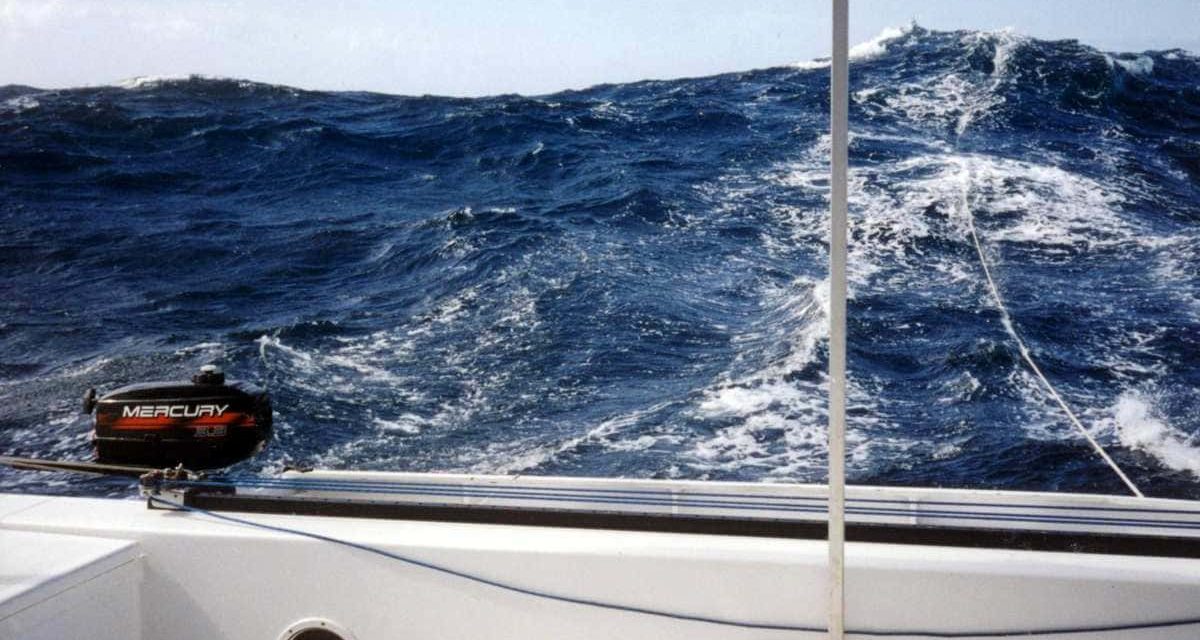
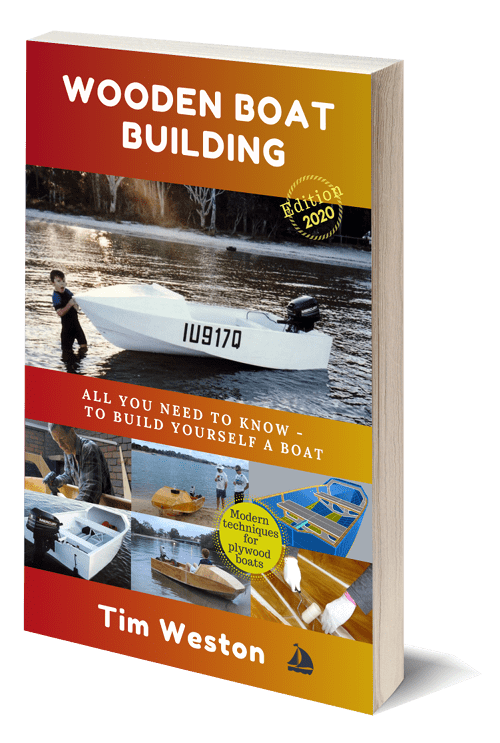
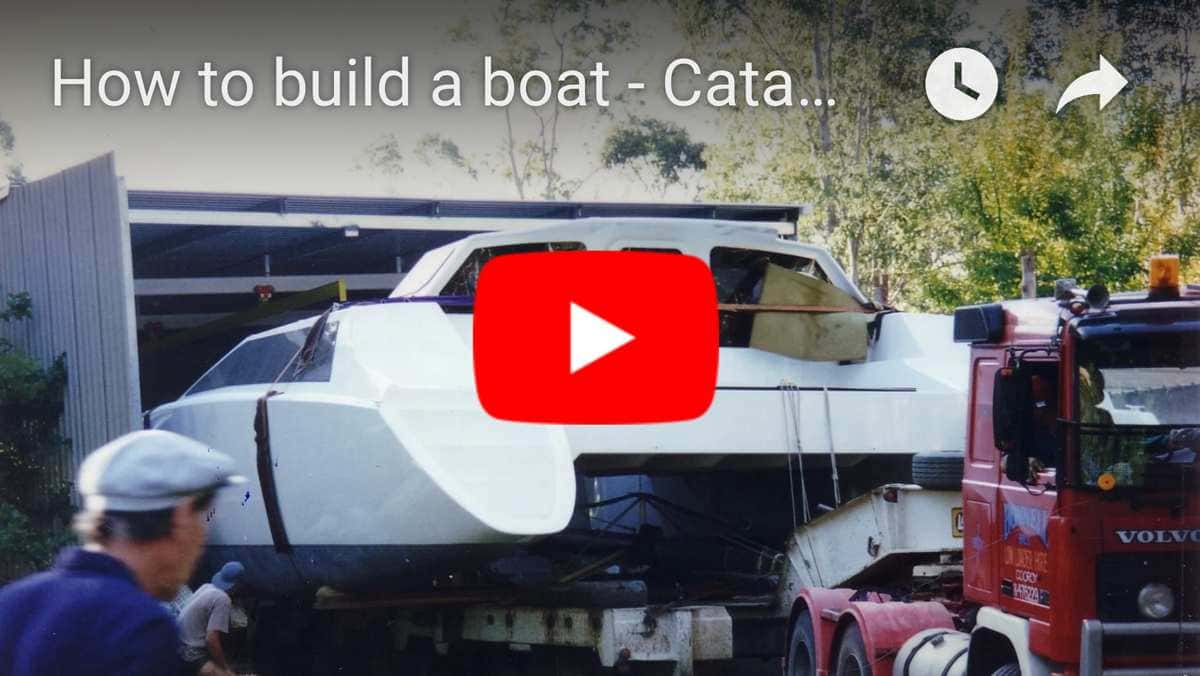
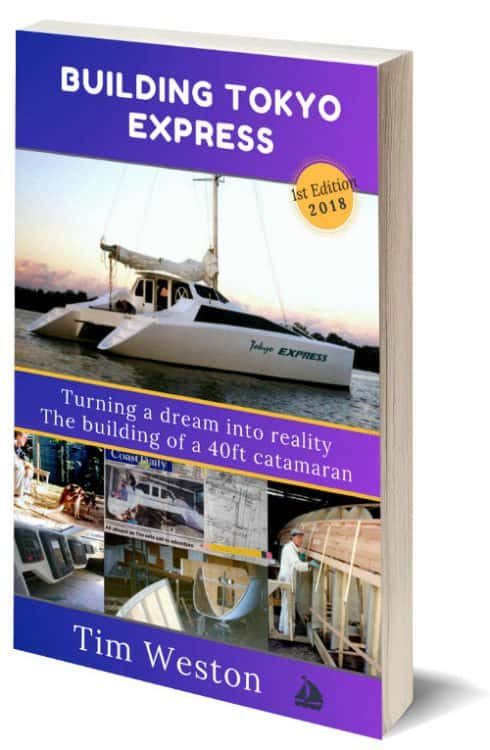
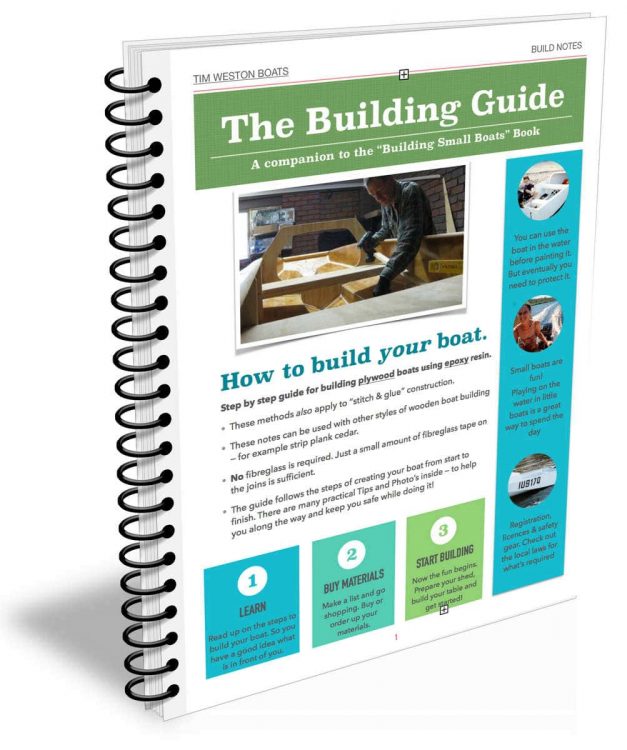


THANK YOU – A HAPPY TIME READING OF YOUR EXPERIENCES AND HELPFUL ADVICES GIVEN. IT WOULD APPEAR FOR A SINGLE HANDER THAT 50FT/15METRES IS THE REAL UPPER LIMIT.
IN YOUR WRITINGS NO MENTION IS MADE OF ELECTRIC WINCHES WITH MANUAL WINCHING BACKUP OF COURSE OF COURSE AS A SAFETY OR NO AIDS FOR FOR EASIER AND OR SAFER SAILING.
THE BIGGEST BOAT I EVER OWNED AND SAILED WAS A 40FT DOUBLE BILGE STEEL KETCH WHICH I SAILED EASILY SINGLE HANDED OUTSIDE UP AND DOWN THE WEST COAST 20 MILES OUT SEA AS FORTY YEAR OLD.. THE HARDEST PART WAS LOWERING THE MASTS TO GO UNDER THE BRIDGES.. THE MASTS WERE TABERNACLED TO SWIVEL BACKWARDS
READ LOWERED TO GO UNDER THE BRIDGES TO GO 0N THE SEA OUT AND RETURN. THAT WAS FORTY-SIX YEARS AGO. I NOW SAIL A HOBIE AI OUT AND ABOUT ON THE OCEAN ON MY OWN. I DO ENJOY MY OWN COMPANY.
THANK YOU FOR MAKING MY BLOOD FLOW A LITTLE FASTER AND MY DREAMS A LITTLE CLOSER..MY DREAM IS TO SAIL ANTI CLOCKWISE AROUND THE COUNTRY THAT I LIVE IN. A JOURNEY OF 7500 NAUTICAL MILES. CHEERS M.